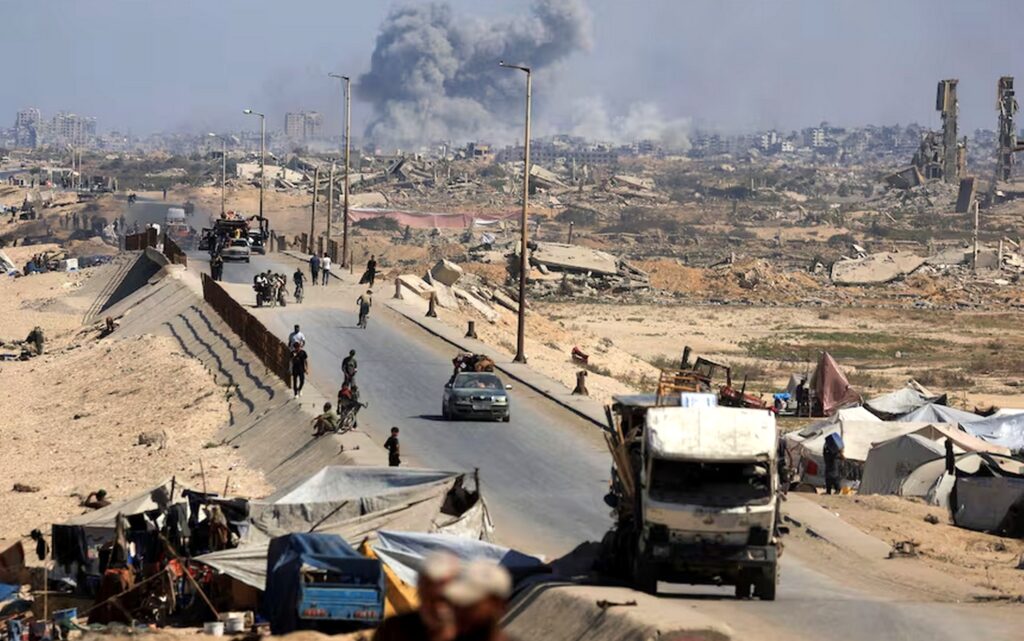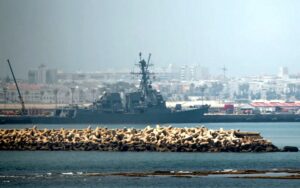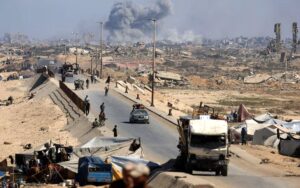The Guardian: Israel’s message to the people of Gaza: You won’t be able to live here

Israel’s environmental genocide in Gaza sends this message: even if we stop dropping bombs, you won’t be able to live here, George Monbiot wrote in the Guardian.
Israel is destroying agricultural land alongside genocide in an effort to eradicate all forms of life in Gaza.
Israel’s motto in this equation is clear: a people without a land, and a land without a people.
There are two ways to achieve this motto: the first is the mass killing and displacement of Palestinians, and the second is rendering the land uninhabitable, alongside the crime of genocide.
Another atrocity is also unfolding: environmental genocide.
While the destruction of Gaza’s buildings and infrastructure is evident in every video we watch, what’s less obvious is the parallel devastation of ecosystems and livelihoods.
Before the October 7 massacre that sparked the current assault on Gaza, approximately 40% of its land was cultivated. Despite its massive population density, Gaza was largely self-sufficient in vegetables and poultry, meeting most of the population’s needs for olives, fruits, and milk.
But last month, the UN reported that only 1.5% of its agricultural land remains accessible and undamaged.
That’s about 200 hectares—the only remaining area directly available to feed more than two million people.
Part of the reason is the systematic destruction of agricultural land by the Israeli military.
Ground forces have demolished greenhouses, bulldozers have uprooted orchards, razed crops, crushed the soil, and aircraft have sprayed herbicides over fields.
The IDF justifies these attacks by claiming that “Hamas often operates from orchards, fields, and agricultural land”.
It appears to operate from hospitals, schools, universities, industrial zones, and any other resources on which Palestinians depend.
All the IDF needs to justify the destruction is the suggestion that Hamas has operated or may operate from the location it seeks to destroy; If there is no evidence, it is too late.
The Israeli Forces continues to expand the buffer zone along Gaza’s eastern border, which includes a significant portion of the Strip’s agricultural land.
As human rights expert Hamza Hamoushen points out, instead of making the desert bloom, a staple of official Israeli propaganda, the IDF is turning fertile and productive lands into barren desert.
The Israeli government has been cutting down ancient Palestinian olive trees for decades to deprive them of their livelihood, demoralize them, and sever their connection to the land.
Olives are of immense material importance, constituting 14% of the Palestinian economy, and they carry immense symbolic power: without olive trees, there will be no olive branch.
Israel’s scorched-earth policy, coupled with its blockade of food supplies, guarantees famine.
The IDF’s offensive on Gaza has led to a collapse in wastewater treatment.
Raw sewage is flooding the ground, seeping into aquifers, and poisoning coastal waters.
The same has happened to solid waste disposal: mountains of garbage now rot and smoke amidst the rubble or are dumped in impromptu landfills, leaking pollutants.
Before the current offensive, Gazans received about 85 liters of water per person per day, which, while scarce, met the minimum recommended amount.
As of February, of this year, the average had dropped to 5.7 liters.
Gaza’s vital coastal aquifer is further threatened by the IDF’s flooding of Hamas tunnels with seawater: beyond a certain point, salt intrusion would render the aquifer unusable.
Last year, the United Nations Environment Program estimated that the average amount of rubble from bombing and destruction per square meter in Gaza was 107 kg.
Much of this rubble is mixed with asbestos, unexploded ordnance, human remains, and toxins released from weapons.
The munitions contain metals such as lead, copper, manganese, aluminum compounds, mercury, and depleted uranium.
Credible reports indicate the IDF’s illegal use of white phosphorus, a horrific incendiary chemical weapon that causes widespread soil and water contamination.
Inhaling the toxic dust and smoke also has severe health consequences.
In addition to the direct devastating impact on the lives of Gaza’s residents, the carbon emissions from the Israeli aggression are astronomical: a combination of the massive direct emissions from the war, and the enormous climate cost of rebuilding Gaza (if its ever allowed), which will produce greenhouse gases equivalent to the annual emissions of an average-sized country.
When you consider ecocide alongside genocide, you begin to understand the entirety of the Israeli state’s attempt to eliminate Palestinians and their homeland.







